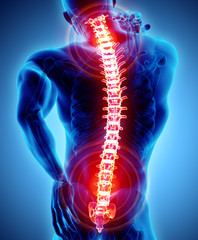
Overuse Injuries and Physical Therapy: Understanding, Treating, and Preventing Introduction.
In our pursuit of fitness and athletic excellence, overuse injuries can often become an unfortunate consequence. These injuries occur when repetitive movements or excessive strain on a particular body part lead to tissue damage and pain. However, with the help of physical therapy, individuals can effectively manage and recover from overuse injuries. In this article, we will delve into the world of overuse injuries, explore the role of physical therapy in their treatment, and discuss preventive measures to maintain a healthy and injury-free active lifestyle.
Understanding Overuse Injuries.
1. Definition and Causes: Overuse injuries are typically caused by repetitive motions, excessive training, or inadequate rest periods. Common examples include tendinitis, stress fractures, runner’s knee, and tennis elbow.
2. Risk Factors: Certain factors increase the likelihood of developing overuse injuries, such as improper technique, sudden increases in training intensity or duration, inadequate warm-up or cool-down routines, and biomechanical imbalances.
3. Signs and Symptoms: Overuse injuries often manifest as pain, swelling, tenderness, reduced range of motion, and weakness in the affected area.
These symptoms may worsen during activity and improve with rest. II. The Role of Physical Therapy in Overuse Injury Treatment.
1. Comprehensive Evaluation: Physical therapists conduct a thorough assessment to identify the underlying causes of the overuse injury. They consider factors such as biomechanics, muscle imbalances, and training techniques to develop an individualized treatment plan.
2. Pain Management: Physical therapy employs various techniques, including manual therapy, modalities (such as heat or cold therapy), and therapeutic exercises, to alleviate pain and reduce inflammation.
3. Restoring Function and Mobility: Through targeted exercises, physical therapists help restore strength, flexibility, and range of motion in the affected area. They may also incorporate techniques like joint mobilization and soft tissue mobilization to enhance tissue healing and improve overall function.
4. Correcting Biomechanical Issues: Physical therapists analyze movement patterns and identify any biomechanical abnormalities that may contribute to the overuse injury. They then develop corrective exercises and movement retraining strategies to address these issues and prevent future injuries.
5. Education and Injury Prevention: Physical therapists educate patients on proper training techniques, warm-up and cool-down routines, and the importance of rest and recovery. They also provide guidance on modifying activities to prevent re-injury and promote long-term musculoskeletal health.
Preventive Measures for Overuse Injury.
1. Gradual Progression: Avoid sudden increases in training intensity or duration. Gradually build up your activity level to allow your body to adapt and strengthen over time.
2. Cross-Training: Engage in a variety of activities to avoid overloading specific muscles or joints. Cross-training helps distribute the workload and reduces the risk of overuse injuries.
3. Proper Technique and Form: Learn and practice correct techniques for your chosen activities. Seek guidance from a qualified coach or trainer to ensure proper form and minimize the risk of injury.
4. Adequate Rest and Recovery: Allow your body sufficient time to rest and recover between training sessions. Incorporate rest days into your routine and prioritize sleep to support tissue repair and overall recovery.
5. Listen to Your Body: Pay attention to any signs of pain, discomfort, or fatigue. If you experience persistent or worsening symptoms, modify your activities, and seek professional advice promptly. Conclusion. Overuse injuries can be a significant setback for individuals striving to achieve their fitness goals. However, with the guidance and expertise of physical therapists, these injuries can be effectively managed, treated, and prevented. By understanding the causes of overuse injuries, seeking early intervention, and adopting preventive measures, individuals can maintain a healthy and injury-free active lifestyle. Remember, physical therapy not only helps in the recovery process but also plays a vital role in optimizing performance and preventing future injuries. Prioritize your musculoskeletal health, listen to your body, and work with a physical therapist to ensure a safe and successful fitness journey.
